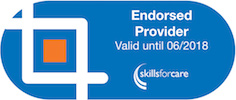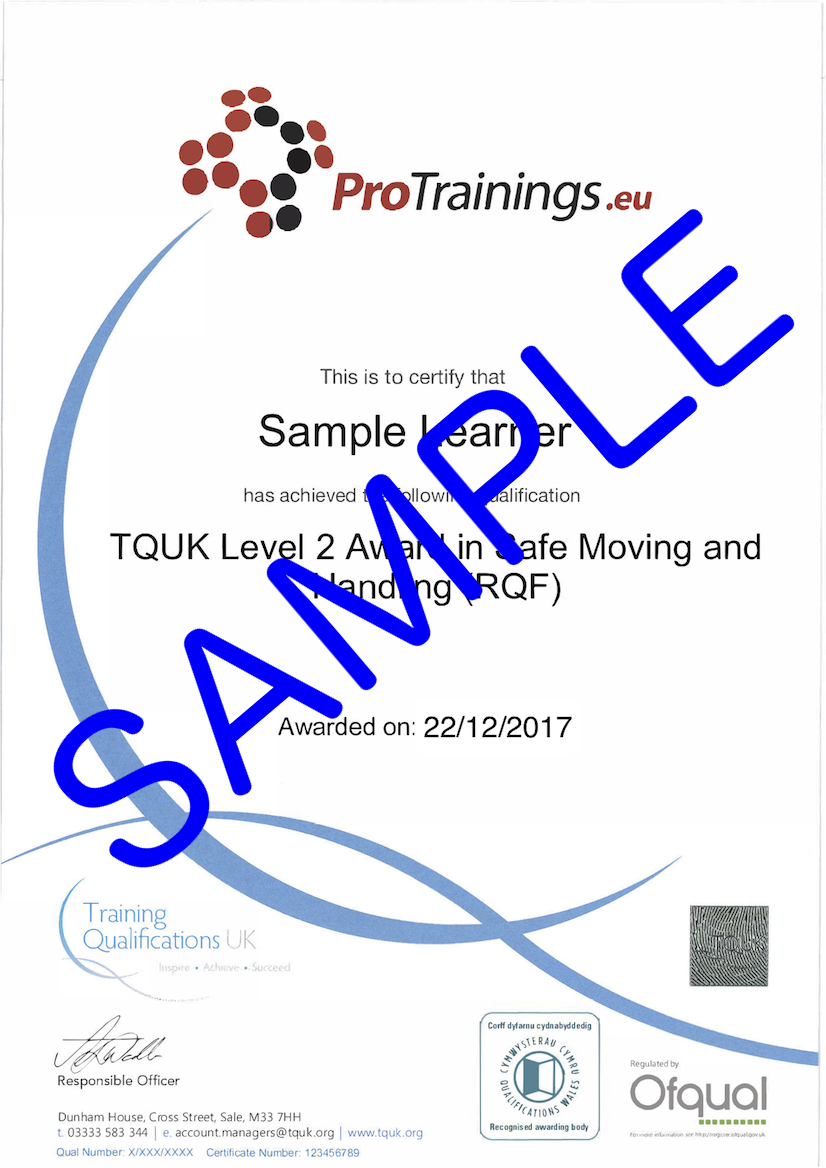This Level 2 Regulated Course teaches you all about the reasons why safe moving and handling is necessary.
The Manual Handling Operations Regulations do not set any weight limits for lifting and carrying loads and amendments in 2002 now require employees to have an adequate or appropriate knowledge or training in order to make assessments to judge whether safe moving is possible. The regulations apply to almost all work environments from offices to care homes and factories. There are different risks associated with different sectors and this accredited qualification offers learning outcomes which are suitable for all.
The qualification includes:
- The reasons for safe moving and handling
- The importance of risk assessment
- The principles of safe manual handling
- The safe application of manual handling skills
The qualification provides an effective means of ensuring that employees are aware of their responsibilities and understand the principles of the safe moving and lifting of loads.
Please be advised that the classroom course has a minimum age requirement of 16.
The content of this and all our courses has been independently certified as conforming to universally accepted Continuous Professional Development (CPD) guidelines and come with a Certified CPD Statement as well as a ProTrainings Certificate and for online courses an Evidence Based Learning statement.
This course gives learners the opportunity to gain a formally recognised regulated qualification. If you require funding, a regulated qualification is often required. Phone us and we can advise if needed. If you choose our course leading to a regulated qualification, there are additional assessment criteria to be undertaken with an instructor and a small extra certification charge.
- Nurses
- Medical Staff
- Care Workers
- Healthcare Professionals
- Managers
- Employees
- Logistics Companies
- Organisations that require moving objects
This course comes with 6.0 hours of CPD, although the time to complete the course online may be less than this.
The content of this and all our courses has been independently certified as conforming to universally accepted Continuous Professional Development (CPD) guidelines and come with a Certified CPD Statement as well as a ProTrainings Certificate and for online courses an Evidence Based Learning statement.
- Introductory Manual Handling Training
- Manual Handling Regulations
- LOLER Regulations
- PUWER Regulations
- Guidelines for Manual Handling
- How and Why we Lift Correctly
- Manager's Duties
- Lifting Safety
- Assessing Risks
- Assessing the Individual Move
- Your Spine
- Anatomy of an Injury
- When an Accident Occurs
- Slips, Trips, and Falls
- Workstation and VDU safety
- Moving and Lifting Objects
- Intro to Box Lifting
- Single Person Lift
- Two Person Lifting
- Working Together
- Moving Unusual Objects
- Odd-Shaped Objects
- Pushing and Pulling
- Lifting Aids
- Using Lifting Aids
- Motorised Lifting Aids
- Conveyor Belts
- Pallet Truck
- Sack Truck
- Trolley
Learning Outcomes
1 Understand the reasons for safe manual handling
1.1 Outline the potential injuries and ill health associated with incorrect manual handling
1.2 Outline employers and employees duties relating to manual handling at work
1.3 Outline the consequences for non-compliance with health and safety requirements at work
2 Understand how manual handling risk assessments contribute to improving health and safety
2.1 Explain the terms ‘hazard’ and ‘risk’ in the context of manual handling work
2.2 Outline the process for carrying out a manual handling risk assessment
2.3 Describe the principle of the risk control hierarchy when applied to manual handling
3 Understand the principles, types of equipment and testing requirements associated with manual handling safety
3.1 Describe safe movement principles associated with manual handling
2.2 Outline the types of equipment designed to be used for manual handling tasks
2.3 Outline the requirements for the testing, servicing and examination of manual handling and lifting equipment
4 Be able to apply safe manual handling principles
4.1 Demonstrate efficient and safe manual handling principles when;
a. applying effort to, or moving a load or object manually on their own
b. when using manual handling aids and equipment
c. when undertaking a manual handling task as part of a team








